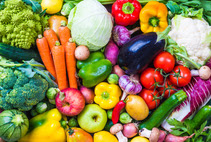
Outbreaks Linked to Raw Produce Increased From 1998–2013, CDC Study Says

A CDC study published in Epidemiology and Infection, concluded that the proportion of all foodborne outbreaks attributable to raw produce increased from 8% in 1998–2013 to 16% in 2010–2013. The study analyzed data reported to CDC’s Foodborne Disease Outbreak Surveillance System in describing raw produce outbreaks before the implementation of the U.S. Food Safety Modernization Act (FSMA).
These raw produce outbreaks were most commonly attributed to vegetable row crops (38% of outbreaks), fruits (35%), and seeded vegetables (11%). Vegetable row crops include foods such as lettuce, spinach, and celery; seeded vegetables include tomatoes, peppers, and cucumbers. The most common causes identified were norovirus (54% of outbreaks), Salmonella (21%), and Shiga toxin-producing Escherichia coli (10%). Food-handling errors were reported in 39% of outbreaks.
FSMA gives food safety regulators increased authority to require implementation of safety measures to reduce the contamination of produce. Evaluation of these measures should take into account trends occurring before FSMA implementation.






















.png)











No hay comentarios:
Publicar un comentario